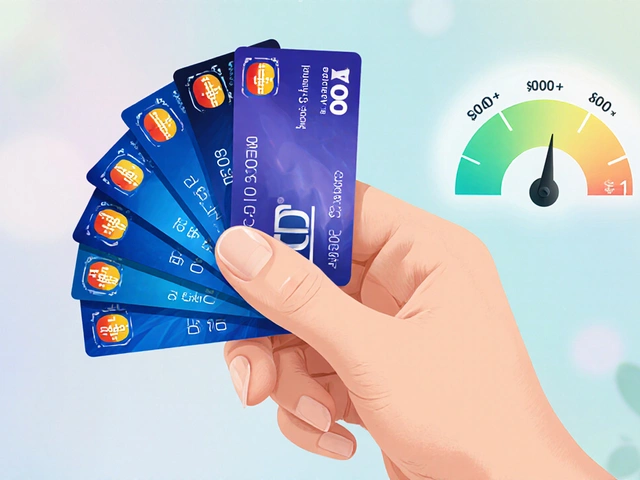
Gold loans have carved out a significant niche in the financial landscape of India, offering borrowers an efficient way to secure funds against their precious metal reserves. As a reliable form of secured loan, gold loans provide quick disbursement processes and minimal documentation, making them an attractive option for anyone facing a short-term financial crunch.
However, as with any form of borrowing, questions about safety and security loom large. Are gold loans indeed as safe as they are made out to be? What safeguards are in place to ensure that the gleaming collateral does not end up in jeopardy? This topic, understandably, is of utmost importance for anyone considering pawning their cherished gold to alleviate financial challenges.
Navigating the world of gold loans requires a clear understanding of its mechanics, including awareness of interest rates, repayment terms, and potential defaults. Thus, taking a comprehensive look at both the benefits and the associated risks will empower borrowers to make informed decisions. After all, securing one's financial future should not come at the cost of losing prized possessions forever.
- Understanding Gold Loans
- Gold Loans: An Overview of Safety
- Potential Risks and Considerations
- Tips for Securing a Safe Gold Loan
- Alternatives to Gold Loans
Understanding Gold Loans
To truly appreciate the charm of gold loans, one must embark on a journey that uncovers the intricacies and fundamentals of this time-tested financial instrument. The rich tradition of leveraging gold as a means to secure funds isn't a novel concept in India. In fact, it dates back centuries, echoing through time as an enduring practice in Indian households. In modern times, gold loan India offerings have been expertly streamlined by numerous banks and non-banking financial companies (NBFCs), making the process strikingly efficient and easily accessible for a wide demographic.
A gold loan operates on a simple premise, one that aligns with the ethos of security and trust. Borrowers who need financial assistance must pledge their gold—often in the form of jewelry or coins—as collateral. This gold is assessed for its purity and weight, and based on its value, a proportionate loan amount is sanctioned. Typically, this ranges from 60% to 85% of the gold's market value. This is particularly advantageous in times of need, where speed is crucial, as the disbursement process is remarkably quick, often completed within a day. The minimal paperwork and verifications required mark it as a hassle-free option.
When we talk about the safety of gold loans, it is imperative to understand the structure within which they operate. These loans are classified as secured, primarily due to the gold pledged ensuring a tangible guarantee. This naturally results in the interest rates being relatively lower compared to unsecured personal loans or credit card borrowing. The interest rate typically hovers between 7% to 13%, though it can vary depending on the lender and market conditions. Notably, the risk for the lender is significantly reduced, leading to more favorable lending terms, which is an attractive proposition for borrowers.
One cannot overlook the cultural context that gold loans hold in the Indian economy. Gold is not only an asset but a deeply cherished symbol of wealth and prosperity. With traditional sentiments at play, individuals are often more inclined to opt for a gold loan over selling prized gold assets. This aspect resonates with a quote by the Reserve Bank of India, "Gold loans bring balance to the liquidity needs of households, aligning closely with their cultural and personal sentiments."
However, it's essential to highlight that the simplicity of gold loans demands precision in understanding the terms. Borrowers must closely examine repayment tenures and associated penalties. A typical gold loan tenure ranges from 6 months to 3 years, with flexible repayment options, including bullet or overdraft facilities. Such flexibility may sound appealing, but prudent borrowers should assess their repayment capacity lest they risk losing their pledged gold.
For more discerning individuals, a range of loan-to-value (LTV) ratios plays a pivotal role. High LTV ratios might provide more funds upfront but could entail higher interest rates, whereas lower LTVs might offer more economical rates. The choice of LTV ratio should align with one's specific financial needs and repayment confidence.
Another important consideration is choosing the right lender. With a plethora of options available—from established national banks to local NBFCs—borrowers should seek those with robust customer reviews, transparent policies, and, most importantly, a secure environment for storing collaterals. The safety of one's gold should not be marginalized in favor of higher loan amounts or better interest rates.
In summation, embarking on a gold loan isn't just a financial decision,; it's a bridge that connects the traditional with the modern, combining cultural reverence with financial pragmatism. For many, it remains a lifeline, a trusted companion in times of need, cementing its role as a vital cog in India's intricate economic machinery.
Gold Loans: An Overview of Safety
When it comes to gold loan safety, understanding the framework and protections offered by lenders is crucial. In India, gold loans are backed by physical gold as collateral, which inherently reduces the credit risk for the lender. This collateral-based system plays a significant role in maintaining the safety and security of both parties involved—the borrower and the lender. Borrowers should be aware that banks and non-banking financial companies (NBFCs) offering gold loans follow stringent guidelines set by the Reserve Bank of India (RBI). These rules are designed to ensure transparency and protect the interests of the borrower.
Lenders conduct thorough evaluations of the pledged gold, often relying on certified assessors to determine the purity and value. This verification process ensures that both parties agree on the asset's worth, minimising disputes. Once the value is confirmed, loans are typically disbursed as a certain percentage of the gold's assessed value, often around 75-80%. This margin serves as a buffer against fluctuations in gold prices, further safeguarding the lender's interest and indirectly the borrower's as it ensures the valuation isn't overly optimistic.
"Gold loans are a unique financial instrument that leverage cultural assets for financial benefit. They bridge immediate funding gaps while providing a clear redemption path." — Finance expert, Raghavendra Rao
Security of stored gold is another aspect where lenders particularly excel. The pledged gold is stored in vaults with high safety standards, often comparable to international levels. These vaults are equipped with advanced security technologies, including 24/7 CCTV surveillance and restricted access protocols. It's key for borrowers to inquire and ensure that the institution's reputation matches its promise of secure storage. Additionally, legitimate lenders often offer insurance coverage for the stored gold, providing further peace of mind.
Interest rates on gold loans are generally more favorable than unsecured loans due to the reduced risk posed by the collateral. Competitive interest rates are advantageous, but potential borrowers must read the fine print, paying attention to any processing fees or hidden charges that could diminish the attractiveness of the offer. Choosing a reputed lender can help avoid unexpected pitfalls. Comparing multiple offers and asking questions about prepayment options, penal charges, and tenure flexibility are prudent strategies. This proactive approach will decrease the likelihood of surprises during the loan tenure and reflects a significant aspect of the loan's safety.
Gold loans, being less prone to economic or credit cycle fluctuations, can act as a steady ship amidst financial turbulence. They are not heavily swayed by external economic factors, making them reassuring in times of financial uncertainty. Moreover, borrowers retain ownership of the gold, ensuring they can reclaim it once the full repayment has been made. As a result, in terms of liquidity and risk management, gold loans can be considered among the more stable options available on the market. Given their structured nature and regulatory oversight, they hold a credible position for individuals seeking emergency funds without compromising long-term financial health.

Potential Risks and Considerations
When evaluating whether to opt for a gold loan in India, it's essential to weigh its associated risks carefully. Among the most significant concerns is the possibility of losing your valued gold. If you're unable to adhere to the repayment terms, the lender can auction your gold to recover their funds. Borrowers must, therefore, be vigilant about ensuring timely EMI payments.
The interest rate you agree upon is another critical factor. While gold loans usually carry lower interest rates compared to unsecured options like personal loans, they can still escalate if market conditions shift or if your loan tenure is extended. It's prudent to research and compare various lenders' offerings before committing to one, emphasizing both the interest rate and any hidden charges or processing fees that could inflate the cost.
In terms of documentation and process, while gold loans are often pitched as hassle-free, it's vital to work exclusively with reputable financial institutions. Beware of fraudulent schemes that promise exorbitant loan amounts on inferior terms. Ensuring the lender is registered and has a track record of fair dealings is crucial. If possible, consult consumer feedback or reviews as a way to safeguard your interests.
"Gold loans can serve as a double-edged sword: a quick financial fix if managed well or a grievous loss if taken lightly," warns finance expert Aesha Shah. The reality is that while gold loans can be a convenient solution in times of need, they necessitate a strong sense of financial discipline from the borrower.
Another consideration is the fluctuating value of gold itself. The worth of your pledged gold can influence your loan eligibility, and since market prices for precious metals can vary, this adds an element of unpredictability. It's advantageous to keep abreast of gold market trends, particularly if preparing to leverage this option for significant funding needs.
A savvy borrower will also consider the availability of pre-payment options. Many financial institutions allow you to close a gold loan before your tenure ends without incurring penalties. This flexibility can save on interest payments, but it requires a disciplined financial strategy to ensure available funds when needed.
Understanding Terms and Conditions
Always read through your loan agreement meticulously, focusing on clauses related to default scenarios and recovery methods. Misinterpretations can lead to troublesome disputes later. If unsure, seeking advice from a financial consultant can prevent mistakes that lead to naviety-based pitfalls.Recognizing these potential risks allows borrowers to make informed decisions, balancing the benefits against the pitfalls. Approached wisely, a gold loan could be a prudent financial maneuver; if not, the repercussions can outshine the initial ease of securing the loan. Hence, striking a sound balance between caution and opportunity distinguishes successful borrowers from those caught in avoidable dilemmas.
Tips for Securing a Safe Gold Loan
When it comes to walking the path of acquiring a gold loan, ensuring the safety of your valuable collateral should be at the top of your list. This blend of financial opportunity and personal asset risk requires a strategic approach to minimize drawbacks and maximize benefits. One crucial aspect is starting with thorough research. Understanding various institutions' interest rates, loan-to-value ratios, and terms is integral. Different banks, financial institutions, and non-banking financial companies (NBFCs) offer diverse schemes, each with its unique set of features and perks.
Every sound financial journey begins with careful scrutiny, and your pursuit of a gold loan shouldn't be an exception. Spend time comparing the interest rates offered by different lenders. Remember, rates might vary significantly between banks and NBFCs. Sometimes, smaller lenders provide competitive rates to attract more clients, but it’s vital to assess their reputation and reliability. Make sure the lender is registered with the Reserve Bank of India (RBI) to ensure you’re dealing with an entity following proper regulatory standards. Checking online reviews from past customers can also offer insights into their trustworthiness and quality of service.
Before you take the plunge into a gold loan, understanding the safety protocols is crucial. Reputable lenders will have rigorous security measures in place to safeguard your gold. It is your right as a borrower to inquire about these practices, including how your gold will be stored, what insurance coverage is provided, and the transparency of their operations. Always insist on a detailed receipt that documents every aspect of your pledged gold. In a quote by the renowned financial advisor, Rakesh Jhunjhunwala, "Transparency is the cornerstone upon which trust is built in lending transactions."
Negotiating can be a game-changer in acquiring a beneficial gold loan. Engaging in a detailed discussion with your loan officer about terms and conditions could lead to better interest rates or more favorable repayment terms. Don’t shy away from asking questions related to hidden charges, processing fees, or prepayment penalties. Each of these factors can substantially impact the overall cost of the loan. Borrowers with an excellent credit history may have a better negotiation angle, often translating into more appealing loan terms. So, always ensure your credit score is in prime condition before you apply.
Repayment planning is another essential aspect of ensuring a safe gold loan. It's important to have a clear and viable plan for repaying the borrowed amount within the stipulated time. Understanding the different repayment methods, such as bullet repayment or EMI options, can help you choose the strategy that aligns with your financial capabilities. Consider putting aside funds specifically for loan repayments to avoid defaulting, as failure to repay can lead to losing your precious gold to the lender. Keeping these points in mind will aid in leveraging your gold loan effectively, ensuring it serves as a bridge in tough times rather than a string of liabilities.

Alternatives to Gold Loans
When you find yourself in need of quick cash, but don't wish to use your gold as collateral, there are several other avenues to explore. Understanding these alternatives to gold loans not only broadens your financial strategy but also aids in selecting the option best suited to your needs. Among these, personal loans, often offered by banks and financial institutions in India, stand out as popular choices. These unsecured loans, unlike their gold counterpart, require no collateral, meaning your assets remain untouched. However, they do come with higher interest rates due to the inherent lack of security for the lender. Eligibility for a personal loan generally hinges on factors such as your income, credit score, and employment stability.
Another viable alternative to gold loan safety concerns is a loan against a fixed deposit. This option is particularly feasible for those who have savings stashed in fixed deposits. Essentially, one can borrow funds against the fixed deposit at interest rates marginally higher than the deposit rate. The biggest advantage here is that your fixed deposit continues to earn interest, even as you access the funds. This option requires significantly less documentation and sees rapid processing times. Additionally, loans against mutual funds and insurance policies present a secure way to leverage existing investments without liquidating them but require a closer look at the risks and potential implications on those investments.
Another increasingly popular option is peer-to-peer lending platforms. These platforms directly connect borrowers with individual lenders willing to offer funds without the involvement of traditional financial institutions. This form of lending often allows for negotiable interest rates that can be more favorable than those offered on conventional loans. It gives both parties flexibility and is appealing to borrowers with less-than-perfect credit histories who might face higher rejection rates at banks. But it's worth noting that the risks involved for both lenders and borrowers can vary, and it’s wise to perform thorough research and vetting before diving into such online platforms.
"Peer-to-peer lending is revolutionizing the way individuals access credit and invest," remarks a senior analyst at a leading financial research firm. "By cutting out the middleman, both parties can potentially benefit from reduced costs and increased transparency."
For those seeking smaller amounts of money, credit cards can also provide a fast means of accessing funds. Unlike gold loans in India, credit cards offer immediate purchasing power with no immediate cash exchange. However, caution is advised due to potentially exorbitant interest rates on outstanding balances post-grace period. Lastly, seek advice from a financial advisor to consider multiple options and weigh their benefits and drawbacks to ensure alignment with your financial goals can never be understated. Thus, what works best invariably depends on your specific circumstances and needs, making a clear understanding of each choice crucial.








Write a comment